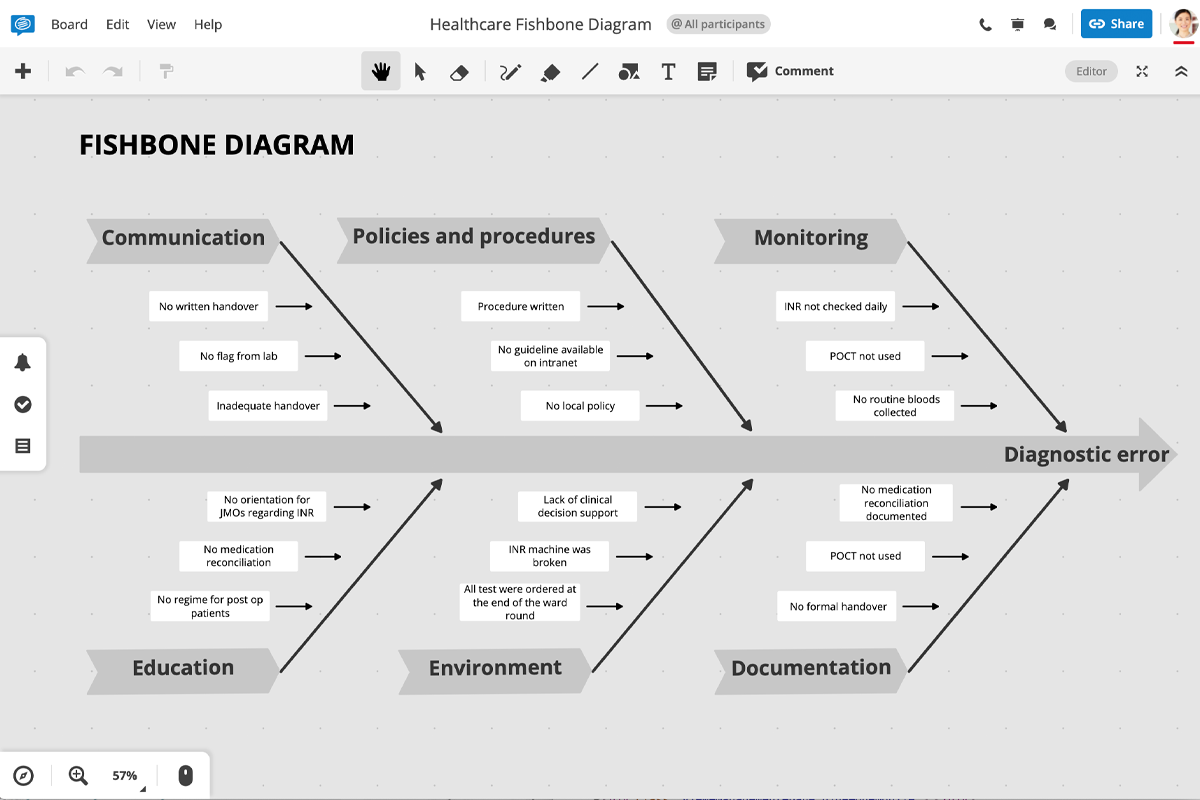

The process is explained with the problem that I was facing with Next Steps, the failing consulting business. You can also test to see which of these the main culprit is and help you solve the problem efficiently. For this process, we need 4 fishes as an extension to the Ishikawa diagram. You can now investigate the issue further using investigations and surveys. Analyze the diagramīy the final step, you should have a fully fleshed fishbone diagram indicating all the possible causes of the problem statement. You may need to draw smaller sub-branch lines off a cause line if that particular cause is a bit more complex. Draw shorter lines off the bones of the fish diagram to help you visualize these potential causes. Identify the possible causes of the problem that may be behind each factor. Draw a line off the spine of the fish diagram for each cause and label each line at the very top. These could be systems, materials, equipment, people, external forces, people, etc. They might also be called cause and effect diagrams or Ishikawa diagrams.
#No problems ishikawa diagram how to#
Brainstorm the major categories of causesīy brainstorming with your team, decide how to categorize the significant factors causing the problem. Visualize multiple potential causes of a problem, not just the most obvious. The fish's head represents the problem statement, and the horizontal line resembles the fish's spine. Write the problem statement in a box on the right-hand side, and then draw a horizontal line from your problem statement. Figure out what the exact issue is, who's involved and when and where it occurs.

The first step of creating an Ishikawa diagram involves identifying, agreeing, and writing down a problem statement.

Here is how you can create an Ishikawa fishbone diagram in four easy steps. The ribs represent the causes of an event, and the skeleton's head indicates the outcome. This is because Ishikawa diagrams look like a fish skeleton. You can make use of this methodology and apply it to almost any real-life scenario. It can become a highly effective tool to identify the areas and problems that are limiting your well-being. It can also become an ideal strategy in the area of personal growth. As we pointed out above, the Ishikawa diagram doesn’t have to be limited to social and business spheres. Problems in business today are often very complicated, but when they are visualized and broken down into smaller individual causes and effects, there is no problem that cannot be solved.Īt ProTrans, quality and continuous improvement is in our DNA.Ishikawa diagrams are sometimes referred to as fishbone diagrams, Fishikawa, herringbone diagrams, or cause and effect diagrams. The Ishikawa diagram for personal growth. When problem-solvers place the problem at the center of the diagram and branch causes off of it, they can see exactly what is causing a problem, draw causal relationships between various issues in related categories, and come up with solutions. Writing the problem out makes it less abstract and easier to determine the causes. Using the Ishikawa or Fishbone Diagram is an effective way problem-solvers can visualize a complex problem. Categories that do not have many ideas can be focused on in greater detail. Then each individual problem will form layers that can be totaled to solve the whole complex problem. Write the problem to be solved (the EFFECT) as descriptively as. The reason for the causes can be broken down using the 5-Why Method to determine the root cause for each individual problem. How to Get Started To create a Fishbone Diagram, you can use any of a variety of materials.


 0 kommentar(er)
0 kommentar(er)
